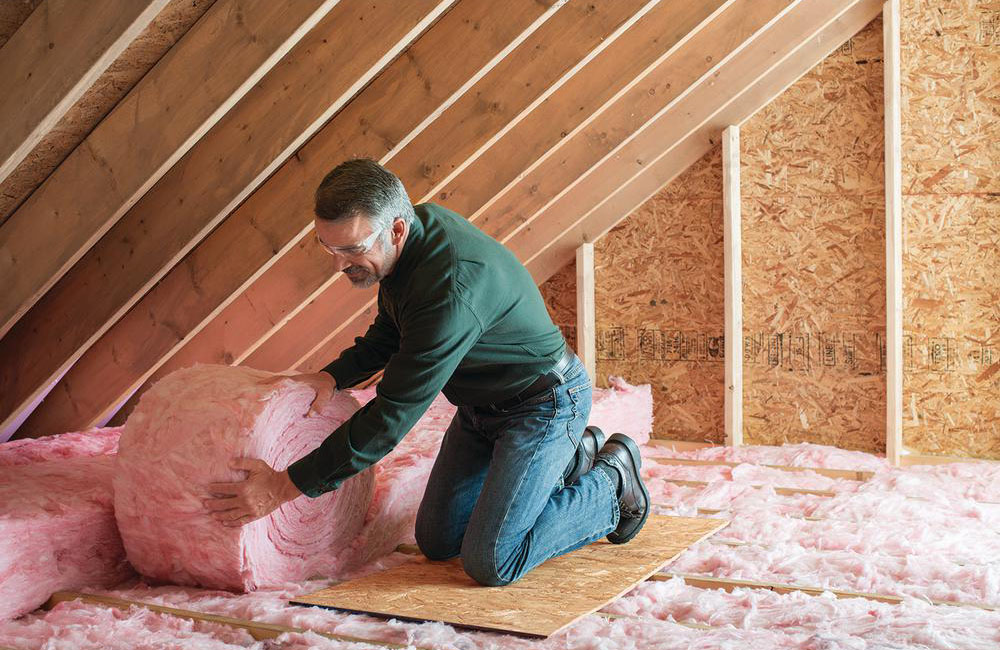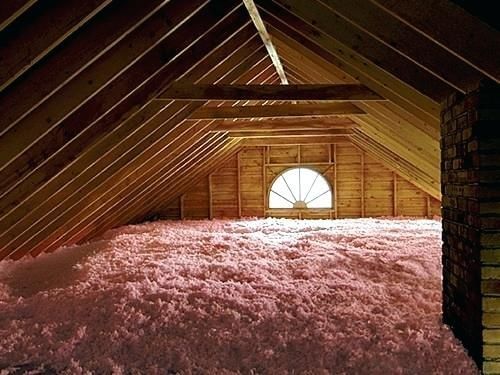Conserve Cash and Improve Comfort with Specialist Attic Insulation DFW
Conserve Cash and Improve Comfort with Specialist Attic Insulation DFW
Blog Article
Discover the Various Kinds Of Attic Insulation and Their One-of-a-kind Benefits for Your Home's Power Effectiveness

Fiberglass Insulation
Fiberglass insulation is among the most frequently utilized materials for attic room insulation because of its superb thermal performance and cost-effectiveness. Made up of tiny glass fibers, this material properly catches air, creating a protecting obstacle that helps maintain regular indoor temperature levels. Its high R-value per inch makes it particularly effective at standing up to warmth transfer, which is vital for energy conservation in homes.
Installation of fiberglass insulation is fairly simple, commonly available in batts or loose-fill forms, suiting various attic configurations. Furthermore, it is non-combustible and immune to wetness, lowering the risk of mold advancement. This resilience adds to its durability, making fiberglass a sensible lasting investment for property owners.
Additionally, fiberglass insulation is usually made from recycled products, which improves its eco-friendliness. The material can likewise contribute to soundproofing, lessening sound transfer in between spaces. While it is vital to put on protective gear during installment to prevent inflammation from the fibers, the total benefits of fiberglass insulation, including energy financial savings and ecological considerations, make it a prominent selection for improving attic performance and advertising a comfortable living atmosphere.
Spray Foam Insulation
Spray foam insulation is a very effective alternative for attic insulation, recognized for its premium air sealing and thermal performance. This ingenious insulation product is composed of a combination of isocyanate and polyol material, which, when incorporated, increases swiftly to fill spaces and tooth cavities in the attic area. Its capacity to comply with different surface areas makes sure a constant obstacle against air leakages, considerably minimizing warmth loss during colder months and warmth gain during warmer periods.
One of the vital benefits of spray foam insulation is its high R-value per inch, which indicates it gives superb thermal resistance in a relatively thin application. This is especially useful in attics where area is usually limited. Additionally, spray foam can aid lessen moisture build-up, minimizing the risk of mold and mildew and mildew development, which can be damaging to both the framework and indoor air quality.
While the initial expense of spray foam insulation may be greater than traditional alternatives, its long-term power cost savings, coupled with raised comfort and enhanced home worth, make it a worthwhile investment for home owners looking for improved power efficiency. Attic Insulation DFW. Overall, spray foam insulation attracts attention as a reliable solution for maximizing attic room insulation
Cellulose Insulation

Cellulose insulation is a preferred choice for attic insulation, largely composed of recycled paper items treated with fire retardants. This ecologically friendly option is recognized for its exceptional thermal efficiency, successfully lowering warmth transfer in both summer and cold weather. The thick make-up of cellulose allows it to fill voids and gaps in attic room rooms, supplying a smooth barrier versus air leaks.
Among the substantial benefits of cellulose insulation is its ability to withstand mold and parasites, owing to the fire resistant treatments utilized throughout manufacturing. In addition, it boasts a high R-value per inch, which translates right into premium energy effectiveness. Homeowners can expect lower heating & cooling costs as a result of improved insulation.
Setup is usually completed through blowing loose cellulose into the desired location, permitting a fast and effective process. This technique likewise reduces disturbance to the existing structure. Cellulose insulation has a reasonably low environmental influence, as its production procedure uses recycled materials, contributing to lasting building techniques.
Rock Wool Insulation
Amongst the different choices for attic room insulation, rock wool, also called mineral wool, attracts attention because of its remarkable thermal and acoustic performance. Made from natural or recycled materials, rock woollen is view publisher site created by melting rock and spinning it right into fibers, resulting in a product that uses excellent insulation properties.
One of the considerable benefits of rock woollen insulation is its high R-value, which suggests its efficiency in standing up to warm our website flow. This particular not only boosts energy effectiveness however also contributes to maintaining a comfortable indoor temperature level year-round. Additionally, rock wool is naturally fire-resistant, making it a more secure alternative for homes as it can endure high temperatures without melting or releasing toxic fumes.
Moreover, rock wool insulation succeeds in soundproofing capabilities, properly reducing noise transmission in between rooms and from outdoors resources. This makes it an excellent option for homeowners seeking a serene living environment. Rock wool is moisture-resistant, helping to prevent mold and mildew development and keeping the structural integrity of the attic room area. Generally, rock wool insulation supplies an extensive remedy for boosting energy effectiveness, security, and convenience in household setups.
Glowing Obstacle Insulation
Glowing barrier insulation works as an efficient option for lessening warm transfer in attic rooms, particularly in warmer climates. This kind of insulation jobs by reflecting glowing warmth far from living rooms, therefore minimizing the amount of warmth that enters a home during heat - Attic Insulation DFW. Typically made official website up of an extremely reflective material, such as aluminum foil, glowing obstacles are mounted in attics, dealing with the roof, where they can obstruct inbound warmth from the sunlight
The main advantage of glowing barrier insulation is its capacity to lower cooling costs. By showing warmth instead of absorbing it, glowing barriers can aid keep a more steady interior temperature level, decreasing the workload on a/c systems. This efficiency translates right into lower power costs and enhanced convenience for home owners.
Along with energy cost savings, glowing obstacles can likewise contribute to improved interior air top quality. By lowering heat accumulation, they assist reduce moisture degrees, which can protect against mold and mildew growth and boost overall air blood circulation. When mounted correctly, radiant obstacle insulation can be a very useful addition to any kind of energy-efficient home, making it a deserving consideration for house owners aiming to improve their attic room insulation approach.
Conclusion
Finally, understanding the different kinds of attic room insulation-- fiberglass, spray foam, cellulose, rock wool, and radiant barriers-- allows house owners to make enlightened choices relating to power effectiveness. Each insulation kind presents one-of-a-kind benefits, such as exceptional thermal resistance, dampness administration, and audio depletion. By choosing the appropriate insulation material, significant reductions in power costs can be achieved, together with enhancements in interior convenience. Inevitably, the right choice adds to a much more sustainable living atmosphere and promotes overall power preservation.

In conclusion, understanding the various types of attic room insulation-- fiberglass, spray foam, cellulose, rock woollen, and radiant barriers-- allows house owners to make educated decisions concerning power effectiveness.
Report this page